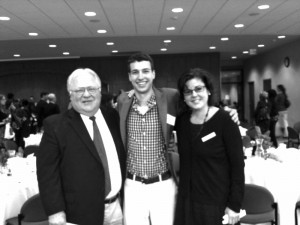By Brent Walkoff
Contributing Writer
For most students, that magical time known as summer is generally a time of relaxation, a time to hang out with friends, and, of course, a time to not do homework. So when the summer of 2010 came rolling around, the future first-years of the University may have been more than surprised to learn that there was a mandatory reading assignment.
This summer, incoming first-years were assigned to read “Five Minds for the Future” by Howard Gardner. The book looks at how our world is developing. According to Gardner, in order for today’s generations to be successful in the next few years, they must learn to cultivate different aspects of their personas, these aspects being called different “minds.” The disciplined mind, the synthesizing mind, the creating mind, the respectful mind and the ethical mind are all different facets of our personal character which cannot only be improved but taken to a very deep level. Gardner, a renowned professor and author, has written other highly-regarded books such as “Changing Minds” and “Good Work.”
Provost Mick Smyer not only chose Gardner’s “Minds” as the book that was to be read for the summer assignment, but was also a voice behind the decision to reignite the summer reading program. The incoming class of 2014 is the first class in several years to have such a reading assignment.
According to Smyer, the logic behind the assignment consisted of two key points. “The first reason,” Smyers said, “is to introduce our first-year students to an expectation that you’re going to be doing serious reading in college.”
The second reason lies more within the content of the book. Smyer said, “I thought it was a very good reading for people who are at the outset of their college careers. It makes them ask, ‘What are the capacities I need to be developing, and if I’m thinking about those capacities how do I get the most out of Bucknell?’ ” Clearly, the book deals with consciously thinking about how we as people can look to actively better ourselves for the future. College students of all years are experiencing a key moment in their lives that will effectively determine the path they take for the next 10 years.
Not everyone necessarily agreed with Gardner’s comments or the book selection itself. According to Tracy Mischell ’14, “I think they had good intentions with choosing this book. But I think students who just graduated high school and who are about to enter college, who are about to start this new phase in their life, don’t really want to be reading this particular book.”
Gardner’s book and the assignment itself was not given to students to make them believe in what Gardner was describing but to make the first-year class think, to initiate metacognition and to bring about questions about the actual text.
Whether or not the class of 2014 agreed with Gardner’s book, it is clear that his ideas have hit certain undertones which are explicitly fitting for today’s world. As college students beginning a critical stage in their lives, the student body has not only been given a tool for future success but a basis for which they can make future decisions, both personal and professional.
